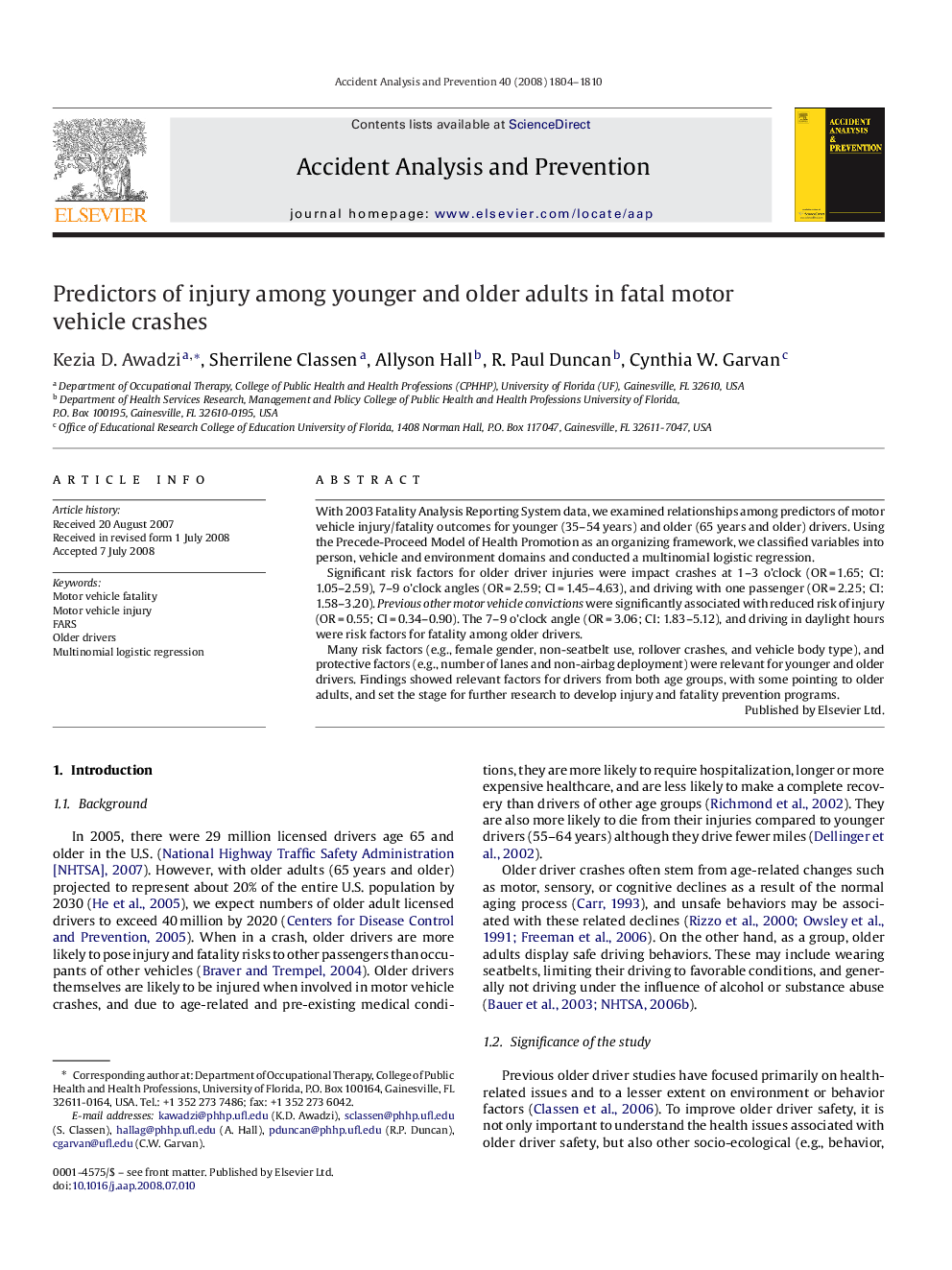| Article ID | Journal | Published Year | Pages | File Type |
|---|---|---|---|---|
| 573317 | Accident Analysis & Prevention | 2008 | 7 Pages |
With 2003 Fatality Analysis Reporting System data, we examined relationships among predictors of motor vehicle injury/fatality outcomes for younger (35–54 years) and older (65 years and older) drivers. Using the Precede-Proceed Model of Health Promotion as an organizing framework, we classified variables into person, vehicle and environment domains and conducted a multinomial logistic regression.Significant risk factors for older driver injuries were impact crashes at 1–3 o’clock (OR = 1.65; CI: 1.05–2.59), 7–9 o’clock angles (OR = 2.59; CI = 1.45–4.63), and driving with one passenger (OR = 2.25; CI: 1.58–3.20). Previous other motor vehicle convictions were significantly associated with reduced risk of injury (OR = 0.55; CI = 0.34–0.90). The 7–9 o’clock angle (OR = 3.06; CI: 1.83–5.12), and driving in daylight hours were risk factors for fatality among older drivers.Many risk factors (e.g., female gender, non-seatbelt use, rollover crashes, and vehicle body type), and protective factors (e.g., number of lanes and non-airbag deployment) were relevant for younger and older drivers. Findings showed relevant factors for drivers from both age groups, with some pointing to older adults, and set the stage for further research to develop injury and fatality prevention programs.
